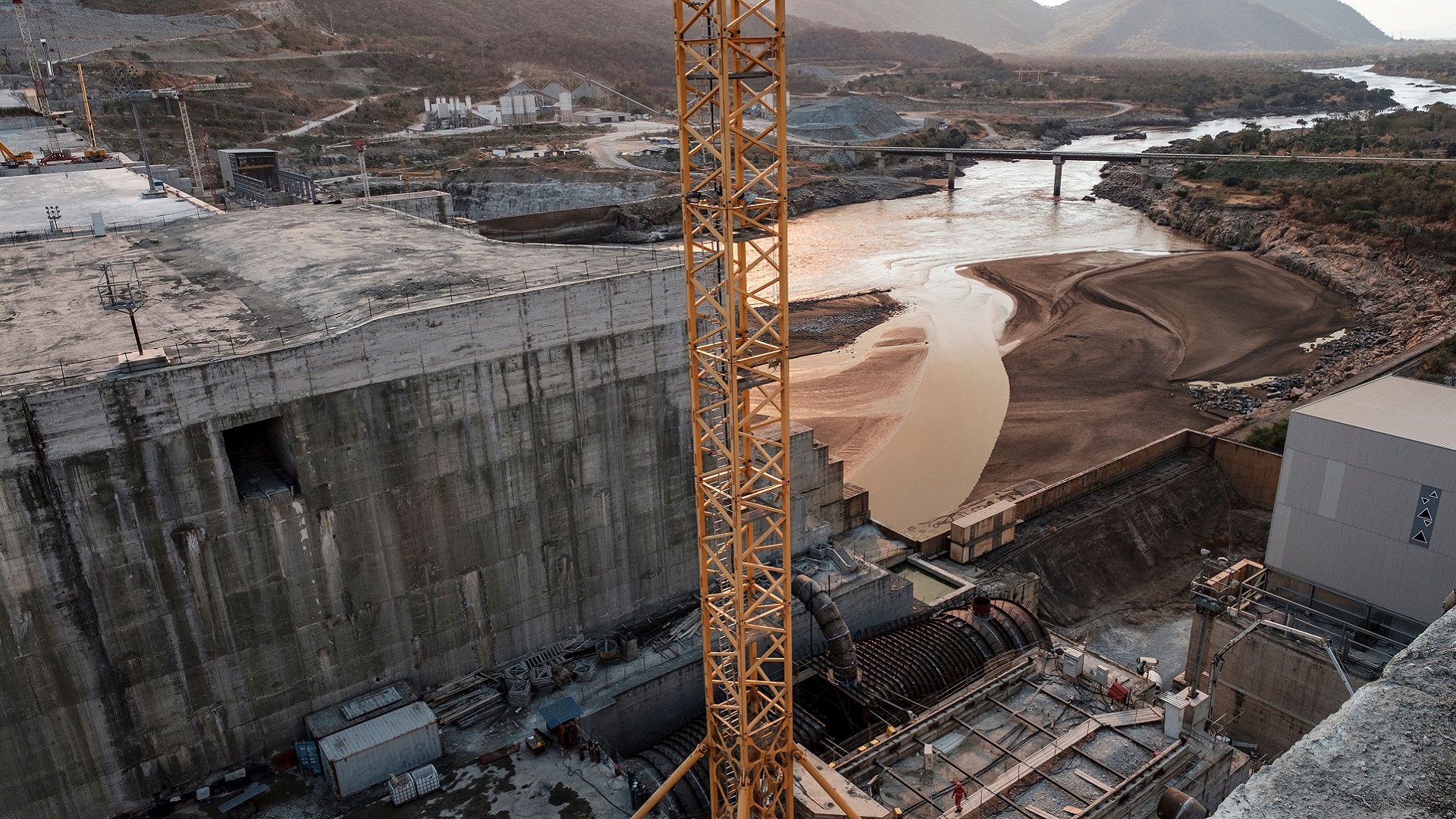The Chinese-financed Grand Ethiopian Renaissance Dam (GERD), despite a recent breakdown in talks on Africa’s largest development project, risks powering up a range of downstream tensions and rivalries. China has a major stake in the project through the extension of a $1.2 billion credit facility to finance the dam’s transmission lines.
This is part of some $16 billion in Chinese loans to Ethiopia, according to the US National Bureau of Economic Research, with Beijing far-and-away Ethiopia’s largest overseas investor.
These run from rising rivalry between Egypt and Ethiopia to a festering border war between Ethiopia and neighboring Sudan. At stake, too, is the future of almost 90% of the water in the Nile River, the world’s longest waterway.
Egypt, where millions depend on the river for their livelihoods, considers control of the Nile an “existential” issue. Sudan, meanwhile, fears the GERD may seriously endanger its own dams, which depend on water flowing from upstream neighbor Ethiopia.
For Egypt, the Grand Ethiopian Renaissance Dam (GERD) stands as one of the country’s most pressing water issues. Controversy has surrounded GERD since construction on the project began in 2011, and while the dam is expected to be completed in 2017, negotiations between Egypt and Ethiopia are ongoing.
How might GERD affect Egypt and what are some possible strategies to move forward?
Minimizing Short Term Impact
A favorable operating schedule for the dam is key to mitigating its environmental and economic impact on Egypt. An operating scenario for the dam should be agreed upon so that Egypt gets its needed legal share of water, and yet Ethiopia, would also benefit from the dam.
An agreement between the two countries should take into account the times when Egypt needs water most; (for example) if the season of cultivation in Egypt is August, September and October, Ethiopia should not decrease Egypt’s water quantity at those times. This would minimize the social impact on Egyptian farmers.
Egypt will start to feel the effects of the dam as Ethiopia fills the reservoir. Ethiopia should fill the reservoir of the dam (i.e the lake behind the dam) in extended years’ intervals so that Egypt will not be deprived of its legal share of water. Egypt’s water share of Egypt will be decreased by somewhere from 12 to 25 percent during the filling period. So, it would be a good idea that the reservoir be filled over a more extended period of time.
These two actions may help mitigate Egypt losses, but there are certain things that cannot be salvaged. The dam will hold a lot of silt behind it, and also some kinds of fish will be totally eradicated. This will have a negative economic and social impact on fishing and agriculture in Egypt that Ethiopia should compensate for, in my opinion, by increasing Egypt’s share of electricity.
Maximizing Long Term Benefits
GERD also presents Egypt with the opportunity to rebuild trust between itself and African countries like Ethiopia. It is essential that Egypt rebuild its trust with other African countries. Egypt should see GERD and the negotiations as opportunities to open up to Africa, to engage with the neighboring countries. Promoting economic exchange between Egypt and other African countries is a long- term goal that Egypt should strive for, and this process could start with Ethiopia and the Renaissance Dam. Ethiopia and Egypt could both benefit from GERD by shifting their attention to economic growth and investment. Ethiopia has a vital investment in Egypt, just as Egypt has a vital investment in Ethiopia. They each have a stake in each other’s futures and need to find ways to negotiate. This means that they can trade in their different interests, both in the short and long- term. Ethiopia, for example, doesn’t have enough food to feed its people. Egypt, on the other hand, has a strong agricultural sector. Egypt could offer Ethiopia agricultural investment projects in exchange for a greater share of the electricity that the dam will produce.
GERD could be a first step in stabilizing Egypt’s long-term relations with neighboring African countries. The goal is to tie Egypt and Ethiopia’s economies in terms of agriculture and energy-trade, even with tourism and investment. Egypt can build trust by investing in Africa, by tying its economy with Ethiopia’s, not only to promote economic growth and development, but also as a buffer should anything go wrong in the future. This way, countries like Ethiopia will be just as invested in Egypt’s economic success as Egypt would be in Africa.
Research to Move Forward
More studies should be conducted on the short and long-term impact of GERD on Egypt. We have to have a mathematical model to know the effects of the dams. There are some unanswered questions that Ethiopia should answer or provide Egypt with the technical information to answer these questions themselves.
The studies should include information on earthquakes or flooding in the region, dam safety standards in Ethiopia and environmental hazards. By understanding the potential impact of the dam fully, Egypt would be better able to come to a fair agreement with Ethiopia and if the countries will reach a good agreement between them, the risks will decrease on the long run.
Only research can show us what the drawbacks and benefits of the dam are likely to be, as well as ways to mitigate any problems. Egypt and Ethiopia need to work together very closely to negotiate, and scientific research would certain help to introduce a more fruitful, healthy debate.

